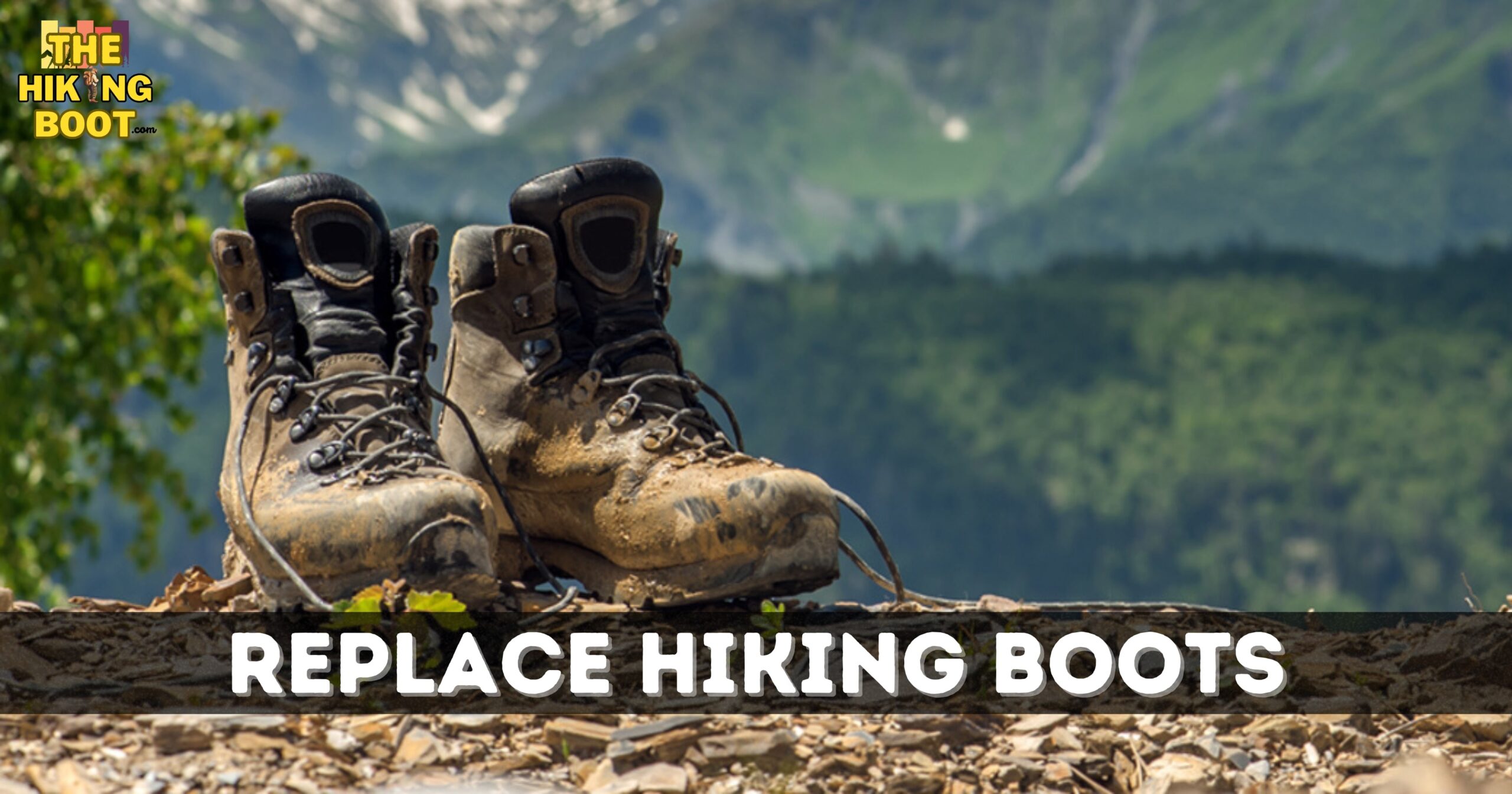As a hiker, trekker, or climber, you know that the quality and condition of your boots directly affect performance while on the trail. And when it comes to proper foot care, investing in the best hiking boots is critical to preventing toe pain, preventing blisters, and keeping feet dry – especially for those long days spent outside.
How often should you replace your hiking boots? The short answer is about every 500-800 miles of use, or every 3-4 years regardless of mileage. But it’s important to note that this timeline depends on the type and quality of your boots, frequency of wear, and intensity of activity type of terrain is a big issue in replacing hiking boots.
So when to replace hiking boots? Keeping up-to-date with their wear and tear will ensure maximum safety in nature.
In this blog post, we will go over the 15 signs of needing new boots as well as provide tips on how often they should be replaced to get safer boots for great adventures.
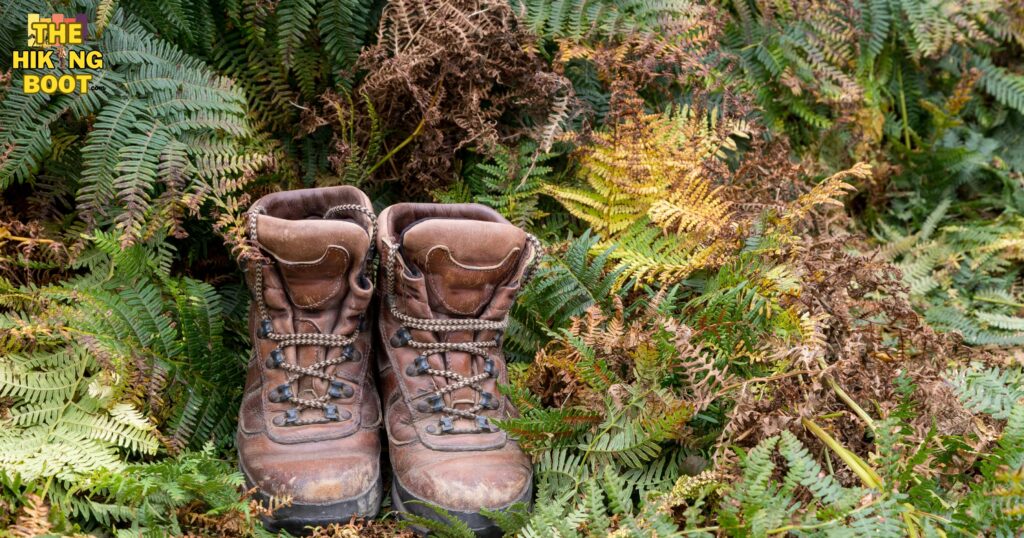
How To Properly Care For Your Hiking Boots?
It is important to take proper care of your hiking boots to extend their lifespan. Proper care means more than just polishing and cleaning them before and after each use.
Some other tips are to Store your boots in a cool, dry place when not in use. This will help prevent wear and tear caused by extreme temperatures or moisture.
What To Look For In A New Pair Of Hiking Boots?
When searching for a new pair of hiking boots, there are several factors to consider.
First, assess the type of terrain you’ll typically be hiking on, as this will determine the level of support and protection you need.
Second, prioritize comfort and fit, as an ill-fitting boot can lead to discomfort and even injury. Look for boots with adequate cushioning, arch support, and a secure lacing system to ensure a snug fit.
Consider the materials used in the boot’s construction, such as waterproof or breathable fabrics, to help keep your feet dry and comfortable in various weather conditions.
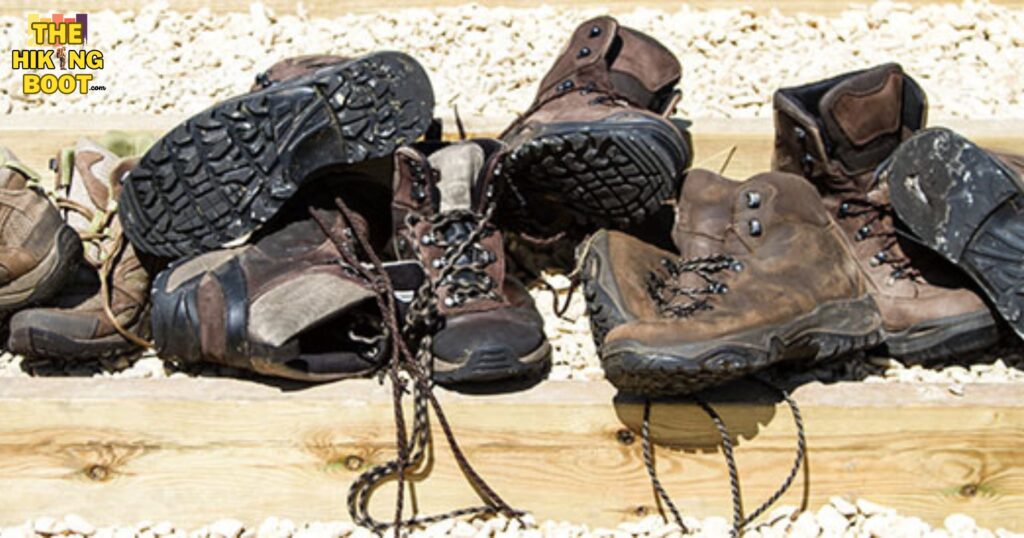
The Signs That When To Replace Hiking Boots
Several factors indicate it’s time to replace your hiking boots. Look for signs like worn outsoles, damaged midsoles, compromised waterproofing, or decreased comfort and support during your hikes. Following 15 signs that when to replace hiking boots
1-The Tread is Worn Down
The tread on your hiking boots is essential for maintaining traction and grip on various terrains.
Over time, the tread will inevitably wear down, which can increase the risk of slipping or losing balance on uneven surfaces.
If you notice that the tread on your boots has become shallow or smooth, it’s time to consider replacing them.
Not only will new hiking boots with proper tread improve your overall safety, but they will also enhance your performance and comfort while out on the trail.
2-The Toe Box is Too Tight or Too Loose
An ill-fitting toe box can cause discomfort and potential injuries during your hikes.
Because an ill-fitting prevent toe pain, If your toes are constantly rubbing against the front of the boot or if there’s excessive space, it’s time to consider investing in a new pair of hiking boots with the proper fit for optimal support and comfort.
3-The Ankle Cuffs are Getting Worn
When ankle cuffs are getting worn, it’s essential to replace your hiking boots with a new pair. Worn ankle cuffs can compromise the support and stability they provide, increasing the risk of ankle injuries and discomfort during your hikes.
Ankle cuffs are designed to help secure your foot in place and prevent unwanted movement within the boot, especially on uneven terrain.
A properly functioning ankle cuff will ensure that your foot stays securely positioned, reducing the likelihood of sprains or strains.
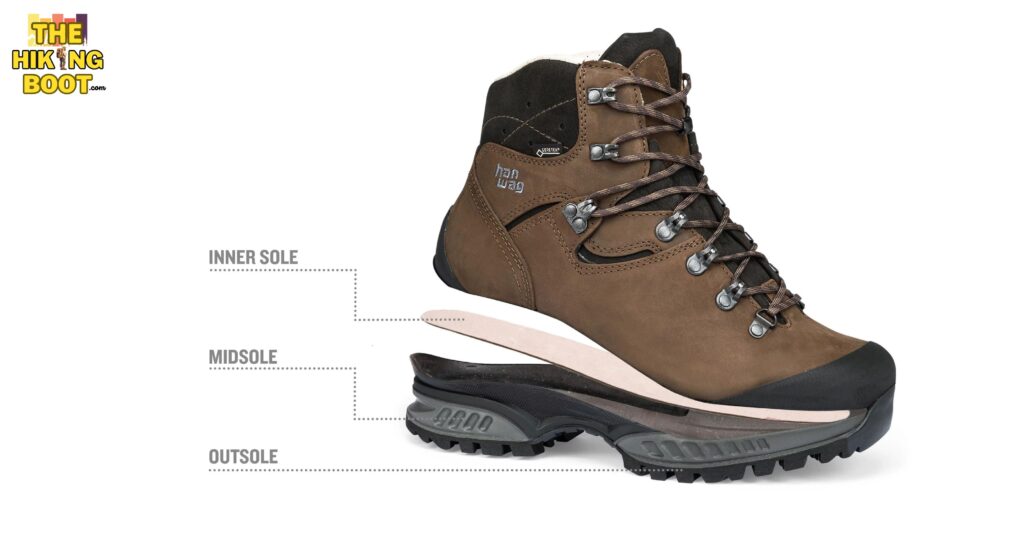
4-The Midsole is Compressed
The midsole provides cushioning and shock absorption, playing a crucial role in your overall comfort during a hike.
If you notice that your boots’ midsoles are showing signs of damage, such as cracks or excessive compression, it might be time to replace your hiking boots.
Damaged midsoles can lead to discomfort and potential injuries on the trail.
5-You Have Pain in Your Feet
Experiencing pain in your feet while hiking could be a sign that it’s time to replace your boots.
Ill-fitting or worn-out boots can cause discomfort and even lead to more serious issues, such as plantar fasciitis or stress fractures.
It’s essential to listen to your body and address any pain you’re experiencing during your hikes.
If you find that your feet are consistently sore or painful after hiking, consider investing in a new pair of boots that provide better support, cushioning, and fit.
6-The Upper is Damaged or Torn
If the upper part of your hiking boots is damaged or torn, it’s a clear sign that they need to be replaced.
Damaged uppers can lead to several issues, such as decreased protection against the elements and reduced overall stability and support.
When the upper part of a hiking boot is compromised, it can no longer effectively protect your feet from water, or sharp objects on the trail.
7-The Insole Has Lost its Cushioning
When your hiking boots’ insoles have lost their cushioning, it poses a risk for your next outdoor adventure and should be addressed immediately.
Insoles play a vital role in providing comfort, and shock absorption, all of which contribute to a safer and more enjoyable hiking experience.
Worn-out insoles can lead to a lack of proper support for your feet, causing discomfort, and increasing the likelihood of injuries.
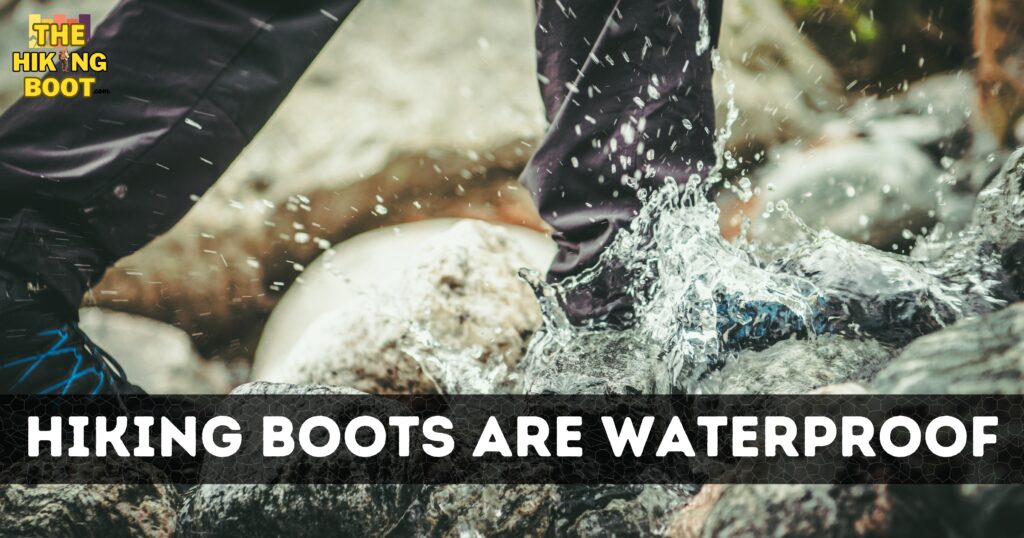
8-The Waterproofing is No Longer Effective
When you lose your waterproofing, it is essential to replace your hiking boots.
Waterproof boots are designed to keep your feet dry and comfortable in wet or damp conditions, ensuring that your feet remain protected from potential hazards, such as wet, slippery surfaces or water-borne bacteria.
The waterproofing membrane within your boots can wear out or become damaged, leading to moisture seeping in.
9-The Heel Counter is Broken or Loose
The heel counter is a crucial component of your hiking boots, as it provides support and stability to your foot during your hikes.
When the heel counter is broken or loose, it can no longer effectively maintain the proper alignment of your foot within the boot, potentially leading to discomfort, pain, or even injury.
If you notice that the heel counter in your hiking boots is damaged or no longer providing adequate support, it’s time to invest in a new pair of boots.
10-The Laces or Eyelets are Damaged
The laces and eyelets on your hiking boots are essential for providing a snug fit.
These components can become worn or damaged, leading to decreased performance and increased risk of injury.
If the laces on your hiking boots have become frayed, split, or otherwise compromised, it’s time to consider investing in a new pair.
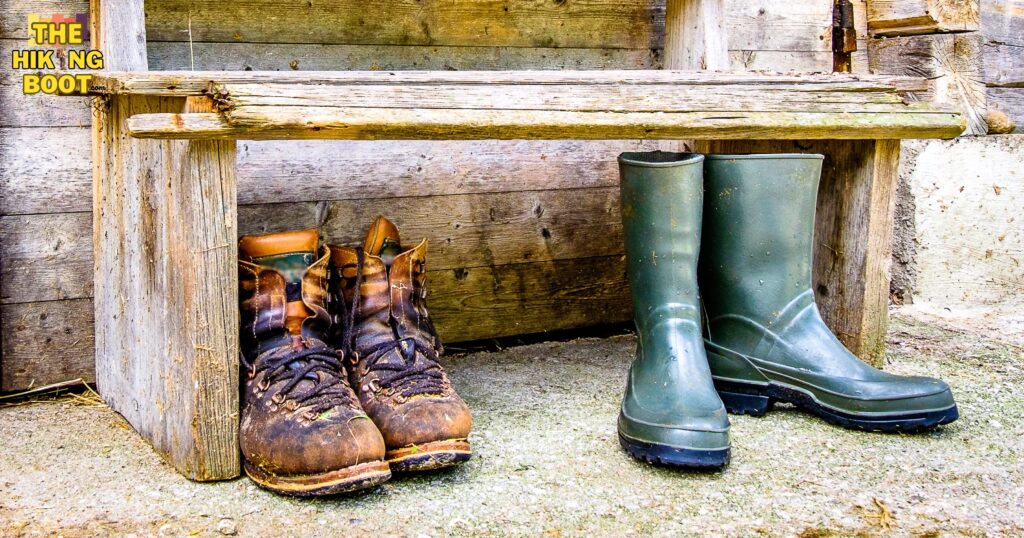
11-Boots Doesn’t Provide Adequate Support
How should hiking boots fit? When your hiking boots no longer provide a snug fit or adequate support for your feet, it’s time to consider replacing them immediately.
The materials and structures of the boots can break down, leading to decreased performance and an increased risk of injury.
A well-fitting and supportive pair of hiking boots is essential for maintaining stability and comfort during your hikes.
Ill-fitting or unsupportive boots can lead to discomfort, foot pain, and potential injuries such as twisted ankles or even stress fractures.
12-Hiking Boots Cause Frequent Blisters
If your hiking boots are consistently causing blisters, this is a strong indication that it’s time to replace them.
Frequent blisters can be the result of ill-fitting boots, worn-out materials, or insufficient support and cushioning.
Blisters can be not only painful but also detrimental to your overall hiking experience, potentially limiting your ability to enjoy the great outdoors to its fullest.
When searching for new hiking boots, ensure that they fit properly, provide adequate support and cushioning, and are made from high-quality materials.
13-If Hiking Boots Don’t Fit Properly
If your hiking boots don’t fit snuggly, it’s essential to consider replacing them as soon as possible.
Ill-fitting boots can not only cause discomfort and pain during your hikes but also increase the risk of injuries, such as rolled ankles and blisters.
Boots that don’t fit properly may hinder your overall performance and enjoyment of the outdoor experience.
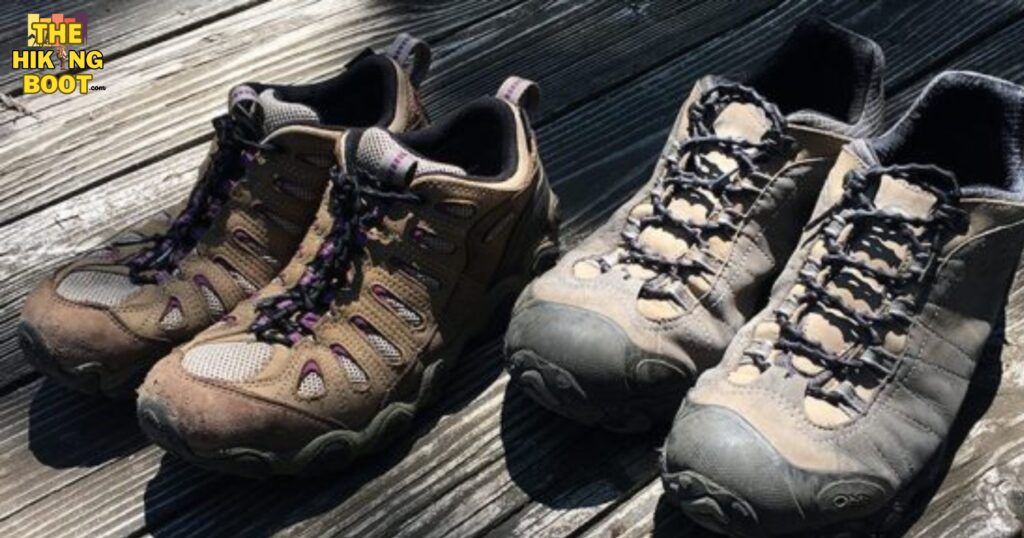
14-If Hiking Boots Don’t Offer Good Traction
If your hiking boots don’t offer good traction, it’s time to consider replacing them.
Traction is an essential factor in hiking safety, especially when traversing steep, slippery, or uneven terrain.
Proper traction helps prevent slips, falls, and potential injuries that could cut your hiking adventures short.
Worn-out soles or treads can significantly reduce the effectiveness of your boots’ grip, making it more difficult to navigate challenging trails.
15-Hiking Boots Has Exceeded its Recommended Lifespan
If your hiking boots have exceeded their recommended lifespan, it’s definitely time to consider investing in a new pair.
As mentioned earlier, hiking boots should generally be replaced every 500-800 miles of use or every 3-4 years, regardless of mileage.
This is because the materials and components of the boots can degrade over time, even if they’re not in use.
Conclusion
We conclude this When to replace hiking boots, Every 500-800 miles of use, or every 3-4 years regardless of mileage. Hiking boots are essential for a safe and comfortable outdoor experience, as they provide support and protection from the elements. It is important to replace your hiking boots when certain signs have been identified – such as damaged uppers, worn-out insoles, or decreased traction. Investing in a quality pair of boots can prevent discomfort, pain, and even injury that could potentially ruin your hiking adventure. With proper care and regular maintenance, you can ensure that your boots will provide the performance needed to get the most out of your outdoor pursuits.
FAQs
How Do You Tell if Your Hiking Boots Are Worn Out?
It can be difficult to tell if your hiking boots are worn out, as the damage may not be visible to the naked eye. Signs that your hiking boots have exceeded their lifespan include uppers showing signs of wear and tear, insoles losing cushioning or support, waterproofing no longer effective, and the heel counter is broken or loose.
Hiking boots should generally be replaced every 500-800 miles of use or every 3-4 years regardless of mileage. This is due to the materials and components of the boots gradually wearing out over time, even if they are not in use.
Is It OK To Wear Hiking Boots Every Day?
No, It’s not recommended hiking boots wear every day but If you love the outdoors and frequently find yourself out on the trails, it pays to invest in a quality pair of hiking shoes. But not everyone has just one activity that they pursue; many people hop around from one pursuit to another.
How Do I Know If My Hiking Shoes Are Good?
When searching for new hiking boots, it’s important to ensure that they fit properly, provide adequate support and cushioning, and are made from high-quality materials. Look for features such as a sturdy heel counter or waterproofing to guarantee the best performance possible.
When Should I Replace My Boots?
Your boots should be replaced when certain signs have been identified – such as damaged uppers, worn-out insoles, or decreased traction. Hiking boots should be replaced every 500-800 miles of use or every 3-4 years regardless of mileage. With proper care and regular maintenance, you can ensure that your boots will provide the performance needed to get the most out of your outdoor pursuits.
How Can I Test My Hiking Boots At Home?
One way to test your hiking boots at home is to try out different terrains such as grass, gravel, and mud. This will allow you to gauge the grip and cushioning offered by the boots. You can check for signs of wear or damage on the uppers and insoles. Finally, perform some basic movements such as walking and running while wearing.
